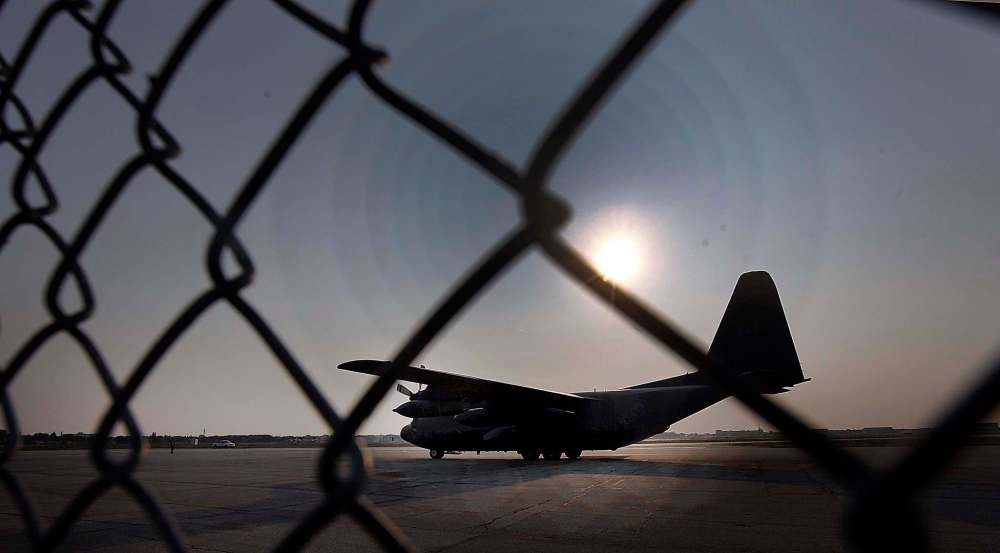Final northern Manitoba evacuees head home
Advertisement
Read this article for free:
or
Already have an account? Log in here »
To continue reading, please subscribe:
Monthly Digital Subscription
$0 for the first 4 weeks*
- Enjoy unlimited reading on winnipegfreepress.com
- Read the E-Edition, our digital replica newspaper
- Access News Break, our award-winning app
- Play interactive puzzles
*No charge for 4 weeks then price increases to the regular rate of $19.00 plus GST every four weeks. Offer available to new and qualified returning subscribers only. Cancel any time.
Monthly Digital Subscription
$4.75/week*
- Enjoy unlimited reading on winnipegfreepress.com
- Read the E-Edition, our digital replica newspaper
- Access News Break, our award-winning app
- Play interactive puzzles
*Billed as $19 plus GST every four weeks. Cancel any time.
To continue reading, please subscribe:
Add Free Press access to your Brandon Sun subscription for only an additional
$1 for the first 4 weeks*
*Your next subscription payment will increase by $1.00 and you will be charged $16.99 plus GST for four weeks. After four weeks, your payment will increase to $23.99 plus GST every four weeks.
Read unlimited articles for free today:
or
Already have an account? Log in here »
Hey there, time traveller!
This article was published 19/09/2017 (2998 days ago), so information in it may no longer be current.
The last of Manitoba’s wildfire evacuees headed home Tuesday, the Canadian Red Cross reported.
“The Canadian Red Cross evacuation response, supporting the people of the First Nation communities of Wasagamack, Garden Hill and St. Theresa Point, officially concluded today with the final evacuees flying back to their home communities,” the aid agency said in a statement.
Over the last two days, 1,100 people staying in Winnipeg, Brandon and Thompson flew home to Garden Hill and Wasagamack, the statement said.

Last week evacuees from St. Theresa Point went home.
Wildfires the size of Winnipeg raged through the remote fly-in Island Lake region and forced a series of evacuations when flames came within a kilometre of homes in Wasagamack Aug. 29.
A full evacuation of Wasagamack was ordered, and smoke from the fire led to partial evacuations in the other two neighbouring First Nations out of health and safety concerns.
At its height, the Red Cross was providing shelter to 6,300 evacuees, including nearly 900 people from Poplar River First Nation affected by a different fire.
The Red Cross operated two massive evacuation shelters, one at the RBC Convention Centre and the other at the WSF Soccer Complex on Leila Avenue when hotel space proved to be at a premium.
Evacuees were moved when hotel rooms became available, but not before complaints surfaced about crowding and lack of privacy in the shelters.
First Nations leaders called for a state of emergency about half way through the evacuation, but one was never called by the provincial government.
“While this has been a very stressful time for the evacuees, we are pleased that they are all finally able to return to their homes and resume their lives,” said Shawn Feely, Canadian Red Cross vice president in Manitoba and Nunavut.
Adding to the stress was the fact Manitoba is in the midst of a mumps outbreak, and a number evacuees reported symptoms of the contagious childhood disease. Both federal and provincial health officials were called in to monitor the cases.
There were no direct deaths from the wildfire, but two evacuees were hospitalized in Brandon after being diagnosed with pneumonia due to smoke inhalation.
About 350 Red Cross volunteers and staff put in more than 14,000 hours of work over the last few weeks, the agency said. The response was part of an agreement with the federal government to provide disaster assistance to Manitoba First Nations.
“I am very proud of the Red Cross team of volunteers and staff that did an incredible job providing support to more than 6,300 people,” Feely said.
alexandra.paul@freepress.mb.ca

